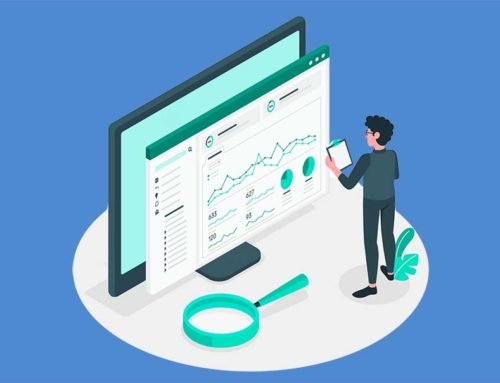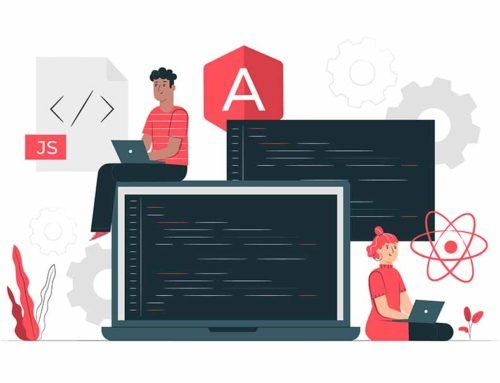If you’re looking to optimize your Facebook advertising efforts, installing a Facebook Pixel on your WordPress website is a crucial step. A Facebook Pixel allows you to track user interactions on your site, which can help refine your ad campaigns and enhance retargeting efforts. Below, we will walk you through the process of installing the Facebook Pixel directly on your WordPress website.
What is a Facebook Pixel?
Before we dive into the installation process, let’s clarify what a Facebook Pixel is. It is a piece of code that you can place on your website to collect data that helps track conversions from Facebook ads. This pixel allows you to build audiences, measure the effectiveness of your ads, and optimize them for better performance.
Step-by-Step Guide to Install Facebook Pixel on WordPress
Step 1: Create Your Facebook Pixel
- Log in to Facebook Ads Manager: Go to your Facebook Ads Manager account and navigate to the ‘Pixels’ section under the ‘Events Manager’.
- Create a Pixel: Click on ‘Create a Pixel’ button. You will be prompted to name your pixel. Make sure to choose a descriptive name that relates to your business.
Step 1: Create Your Facebook Pixel
To start the process of installing a Facebook Pixel on your WordPress site, the first step is creating the pixel itself. Here’s how you can do it:
1. Access Your Facebook Events Manager
- Log in to your Facebook account.
- Click on the dropdown menu in the top right corner and select “Manage Ads”.
- From the left sidebar, choose “Events Manager.”
2. Create a New Pixel
- In the Events Manager, look for the option that says “Pixels” under the “Data Sources” section.
- Click on the “Add” button or the “Connect Data Sources” dropdown and select “Web”.
- Select “Facebook Pixel” and click on “Connect.”
3. Set Up Your Pixel
- You’ll be prompted to provide a name for your pixel. Choose a name that reflects your business or website.
- Enter the URL of your website when asked. While this step is optional, it can help with initial setup guiding.
- Click “Continue.
4. Agree to the Terms and Conditions
After you’ve set up the basic details for your Facebook Pixel, you will be prompted to review and agree to Facebook’s terms and conditions. Carefully read through any provided agreements, as these documents outline how Facebook handles your data and the expectations of using their services.
5. Select Your Installation Method
Facebook will now give you several options to install your pixel. For this guide, we will choose the option to manually install the pixel code, which allows for direct placement into your WordPress theme.
- Look for the option labeled “Manually Install the Code Yourself” and select it.
- You will see a snippet of code that starts with
<script>—this is your Facebook Pixel code. Click on the code box and copy the entire snippet. You will need this code in the next steps.
Step 2: Add the Facebook Pixel Code to Your WordPress Site
Now that you have your pixel code copied, it’s time to place it in your WordPress website. There are two primary methods to do this: using the theme editor or a dedicated plugin.
Method 1: Using the Theme Editor
- **Log in to Your WordPress
Method 1: Using the Theme Editor
- Log in to Your WordPress Admin Dashboard
- Navigate to your WordPress admin at
yourwebsite.com/wp-admin. - Enter your username and password to log in.
- Go to Appearance > Theme Editor
- Once inside the dashboard, look for the “Appearance” option in the left sidebar. Click on it, and then select “Theme Editor” from the dropdown menu.
- Locate the Header File (header.php)
- On the right side of the Theme Editor, you will see a list of theme files. Find and select the header.php file. This file loads every time a page of your website is accessed, making it the ideal location to insert your Facebook Pixel code.
- Insert the Facebook Pixel Code
- Scroll through the header.php file to find the closing
</head>tag. Just before this tag, paste the Facebook Pixel code you copied earlier. It should look something like this:
“`html
!function(f,b,e,v,n,t,s)
{if(f.fbq)return;n=f.fbq=function(){n.callMethod?
n.callMethod.apply(n,arguments):n.queue.push(arguments)};
n.push=n.queue=[],n.version=’2.0′;
n.queue=[];t=b.createElement(e);t.async=!0;
t.src=v;s=b.getElementsByTagName(e
“`html
‘https://connect.facebook.net/en_US/fbevents.js‘);
fbq(‘init’, ‘YOUR_PIXEL_ID’); // Replace with your pixel ID
fbq(‘track’, ‘PageView’);
“`
- Ensure you replace
YOUR_PIXEL_IDwith your actual Facebook Pixel ID, which you can find in your Facebook Events Manager.
- Update the File
- After you’ve added the code, scroll to the top of editor and click the “Update File” button to save your changes.
- Verify Installation
- To ensure the Facebook Pixel is properly installed, use the Facebook Pixel Helper Chrome extension. This tool will check your website and alert you if it detects the pixel correctly.
Method 2: Using a WordPress Plugin
If you prefer not to edit your theme files directly, there are various plugins available specifically designed for adding tracking codes like Facebook Pixels. This method is particularly useful for those who may not be comfortable with code.
- Install a Facebook Pixel Plugin
- Go to Plugins > Add New in your WordPress dashboard.
- Search for “Facebook Pixel”.
Method 3: Using a WordPress Plugin
If you prefer not to edit your theme files directly, there are various plugins available specifically designed for adding tracking codes like Facebook Pixels. This method is particularly useful for those who may not be comfortable with code. Here are the detailed steps to install a Facebook Pixel using a WordPress plugin:
Step 1: Choose a Facebook Pixel Plugin
To begin, select a suitable plugin for integrating Facebook Pixels. Some popular options include:
- PixelYourSite: A comprehensive plugin that allows for quick setup and enhanced functionality.
- Insert Headers and Footers: A straightforward plugin for inserting code snippets into your site’s header and footer sections.
- WP Facebook Pixel: Specifically designed for Facebook Pixel installation, making it user-friendly for beginners.
Step 2: Install and Activate the Plugin
- Log into Your WordPress Dashboard.
- Navigate to the Plugins section on the left sidebar and click Add New.
- In the search bar, type in the name of the plugin you’ve chosen (e.g., PixelYourSite).
- Locate the plugin in the results, click on the Install Now button, and then click **
Step 2: Install and Activate the Plugin
- Log into Your WordPress Dashboard.
- Navigate to the Plugins section on the left sidebar and click Add New.
- In the search bar, type in the name of the plugin you’ve chosen (e.g., PixelYourSite).
- Locate the plugin in the results, click on the Install Now button, and then click Activate once the installation is complete.
Step 3: Configure the Plugin
- Access Plugin Settings: After activation, you will typically find a new menu item added to your WordPress dashboard, often under the name of the plugin you’ve installed (e.g., PixelYourSite).
- Add Your Facebook Pixel ID:
- In the plugin settings, you will see a field requesting your Facebook Pixel ID. If you haven’t created a Facebook Pixel yet, head over to Facebook Events Manager and create one. Once it’s ready, copy the Pixel ID and paste it into the corresponding field in the plugin settings.
- Enable Additional Settings (Optional): Many plugins offer additional tracking options and configuration settings. You can explore these to customize events like Page Views, Add to cart, and purchase.
Step 4: Verify Your Pixel Installation
After configuring your Facebook Pixel, it’s essential to ensure that it’s installed successfully:
- Install the Facebook Pixel Helper: This is a Chrome extension that helps you troubleshoot any issues with your Pixel setup.
- Visit your website and click on the Pixel Helper icon in the upper right corner of your browser. If the Pixel is functioning correctly, you will see a confirmation of the events being tracked.
Step 5: Monitor and Optimize Your Pixel Performance
Once you have your Facebook Pixel up and running, it’s crucial to monitor its performance. You can check the data on the Facebook Events Manager to analyze the behavior of users on your site.
- Review Events and Conversions: Make sure you’re tracking relevant events that align with your business goals.
- Adjust Ad Campaigns Accordingly: Utilize the data collected to make informed decisions regarding your ad campaigns, ensuring that they are targeting the right audiences.
Here are some key benefits of installing Facebook Pixel on your WordPress website:
1. Custom Audiences
- Facebook Pixel allows you to create highly targeted custom audiences based on the behavior of visitors to your website. You can retarget users who have previously interacted with your site but did not convert, increasing the likelihood of conversion through tailored ads.
2. Standard & Custom Events Tracking
- With Facebook Pixel, you can track both standard events (like page views, purchases, and sign-ups) and set up custom events specific to your business needs. This enables you to gather detailed insights into user interactions, allowing for better analysis and optimization of your marketing efforts.
3. Conversion Tracking
- The Pixel helps measure the success of your Facebook ad campaigns by tracking conversions. You can see which ads are driving traffic and sales, allowing you to adjust your strategy based on real-time data.
4. Ad Retargeting
- By leveraging the data collected through Facebook Pixel, you can retarget visitors who have abandoned their shopping carts or shown interest in specific products. This tailored approach can significantly improve your chances of converting those visitors into customers.
5. Improved Ad Performance
- The insights gained from Facebook Pixel can help you refine your ad targeting. You can identify the demographics and behaviors of users who are most likely to convert, allowing for more effective ad spend and improved ROI.
6. Lookalike Audiences
- Facebook Pixel enables you to create lookalike audiences based on your existing customer data. This feature allows you to reach new potential customers who share similar characteristics with your best existing customers.
7. Better Campaign Optimization
- The data gathered from Facebook Pixel aids in optimizing your ad campaigns. By understanding which ads perform best and what actions users take on your site, you can make informed decisions to enhance your advertising strategy.
8. Cross-Device Tracking
- Facebook Pixel tracks user interactions across multiple devices. This capability allows you to understand user behavior as they switch from mobile to desktop, helping you create a seamless customer journey and more effective ad strategies.
9. Increased Efficiency in Ad Spend
- By using the insights provided by Facebook Pixel, businesses can maximize their advertising budget. You can allocate resources to the most effective ads and campaigns, minimizing waste and increasing overall marketing effectiveness.
10. Enhanced Reporting Features
- Facebook Pixel offers detailed reporting features, enabling you to analyze user behavior and conversion metrics. This data can help you refine your marketing strategies and make data-driven decisions to grow your business.
Additional Benefits of Custom Conversion Events and Conversion API Tracking
1. Enhanced Targeting Precision:
Custom conversion events allow you to tailor your ad campaigns to specific actions that matter most to your business. By tracking unique user interactions, you can create highly targeted audiences. This means your ads can be shown to users who have completed actions like signing up for newsletters or abandoning their shopping carts, increasing the likelihood of conversion.
2. Improved ROI Measurement:
With custom conversion events, you can precisely measure the return on investment (ROI) of your advertising spend. By tracking specific actions and their associated values, you can gain insights into which campaigns and ads are delivering actual results. This data enables you to allocate your budget more effectively, focusing on high-performing ads that generate the best returns.
3. Greater Flexibility in Campaign Optimization:
When you set up custom conversion events, you gain the flexibility to adjust your ad targeting and bidding strategies based on real-time performance data. This responsive approach allows for continuous optimization, ensuring your ads are always reaching the right audience based on their actions and interactions on your website.
4. Deeper Insights with Event Parameters:
By utilizing event parameters within your custom conversion tracking, you can capture additional details related to user actions, such as product categories, transaction values, and user demographics. This granular data helps refine your audience targeting and enhances the overall effectiveness of your advertising strategy.
Benefits of Conversion API Tracking
1. Enhanced Data Reliability:
The Conversion API establishes a server-to-server connection, allowing you to send conversion data directly to Meta. This reduces reliance on browser-based tracking, which can be hindered by ad blockers or privacy settings, ensuring that your data remains accurate and reliable.
2. Improved Compliance with Privacy Regulations:
With increasing scrutiny around data privacy, the Conversion API enables you to collect and manage user data responsibly. By controlling the data you share and ensuring it aligns with user consent, you can maintain compliance with regulations while still optimizing your ad performance.
3. Reduced Cost Per Action:
By utilizing both the Meta Pixel and the Conversion API, you enhance the overall effectiveness of your ad delivery system. This combination allows for better optimization of your bids and targeting, often leading to a reduced cost per action and improved overall campaign efficiency.
Easy Installation Through Google Tag Manager
1. Streamlined Setup Process:
Integrating the Meta Pixel and Conversion API via Google Tag Manager simplifies the installation process. You can manage all your tags in one place without modifying your site’s code directly, making it more convenient for users who may not have technical expertise.
2. Flexible Management of Tags:
Google Tag Manager allows you to easily add, edit, or disable tags without needing to deploy new code. This flexibility means you can quickly respond to changes in your marketing strategy or track new events as your business evolves.
3. Version Control and Debugging Tools:
With Google Tag Manager, you gain access to built-in version control and debugging tools. This feature allows you to test your tags before they go live, ensuring that your tracking is functioning correctly and accurately capturing the data you need.
4. Centralized Tracking Management:
Using Google Tag Manager consolidates your tracking efforts, enabling you to manage all your marketing and analytics tags from a single interface. This centralized approach provides a clear overview of your tracking setup, making it easier to implement adjustments as your advertising needs change.
By leveraging the benefits of custom conversion events, the Conversion API, and the ease of installation through Google Tag Manager, you can significantly enhance your marketing strategy, optimize your ad spend, and ultimately drive better results for your business.
In summary, installing Facebook Pixel on your WordPress site can significantly enhance your marketing efforts by providing valuable insights, improving audience targeting, and ultimately driving higher conversion rates.
Conclusion
Installing Facebook Pixels directly on your WordPress website can dramatically improve your marketing efforts and provide valuable insights into user behavior. By following the steps outlined in this guide, you’ll be well on your way to enhancing your Facebook advertising campaigns and optimizing conversions.
Call to Action
Now that you understand how to install Facebook Pixels on your WordPress site, it’s time to take action! Choose a plugin that suits your needs, set it up, and start gathering actionable insights today. If you found this guide helpful, share it with fellow website owners looking to optimize their digital marketing efforts!





